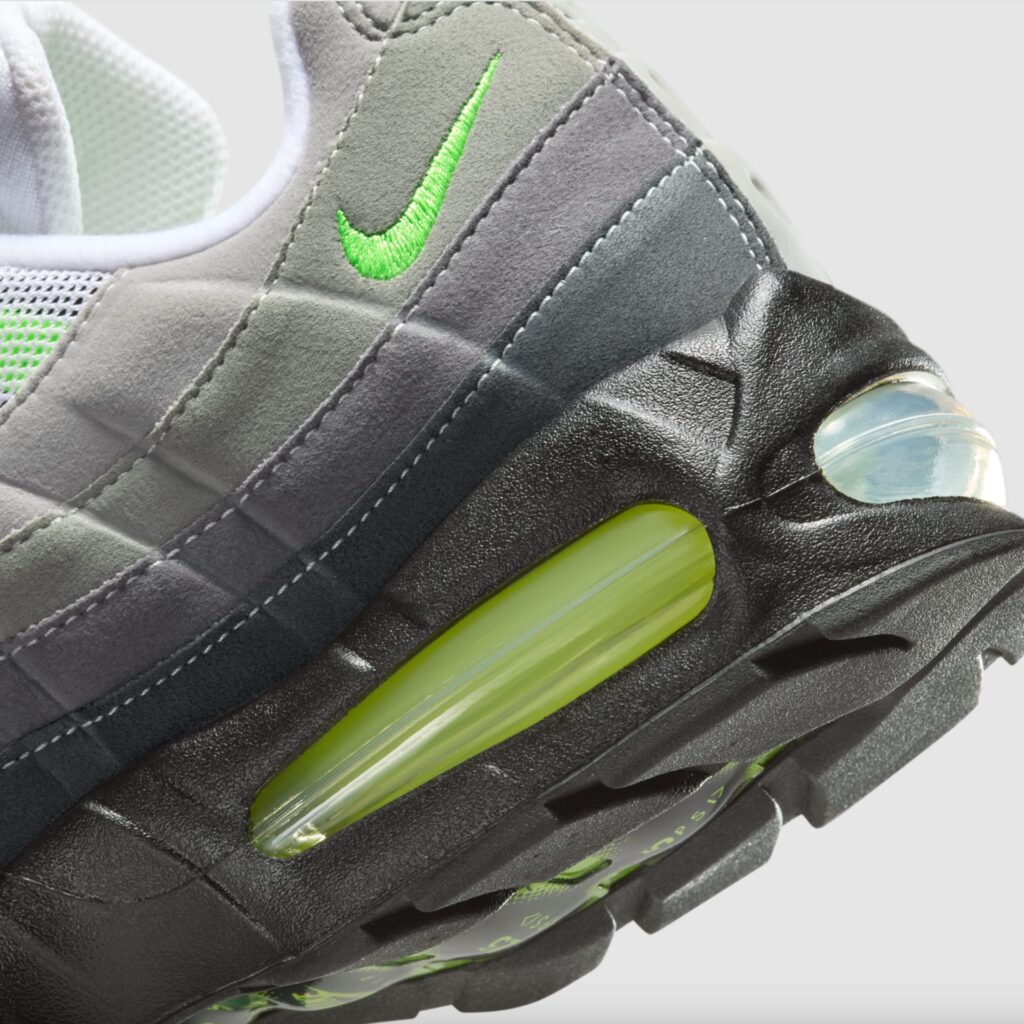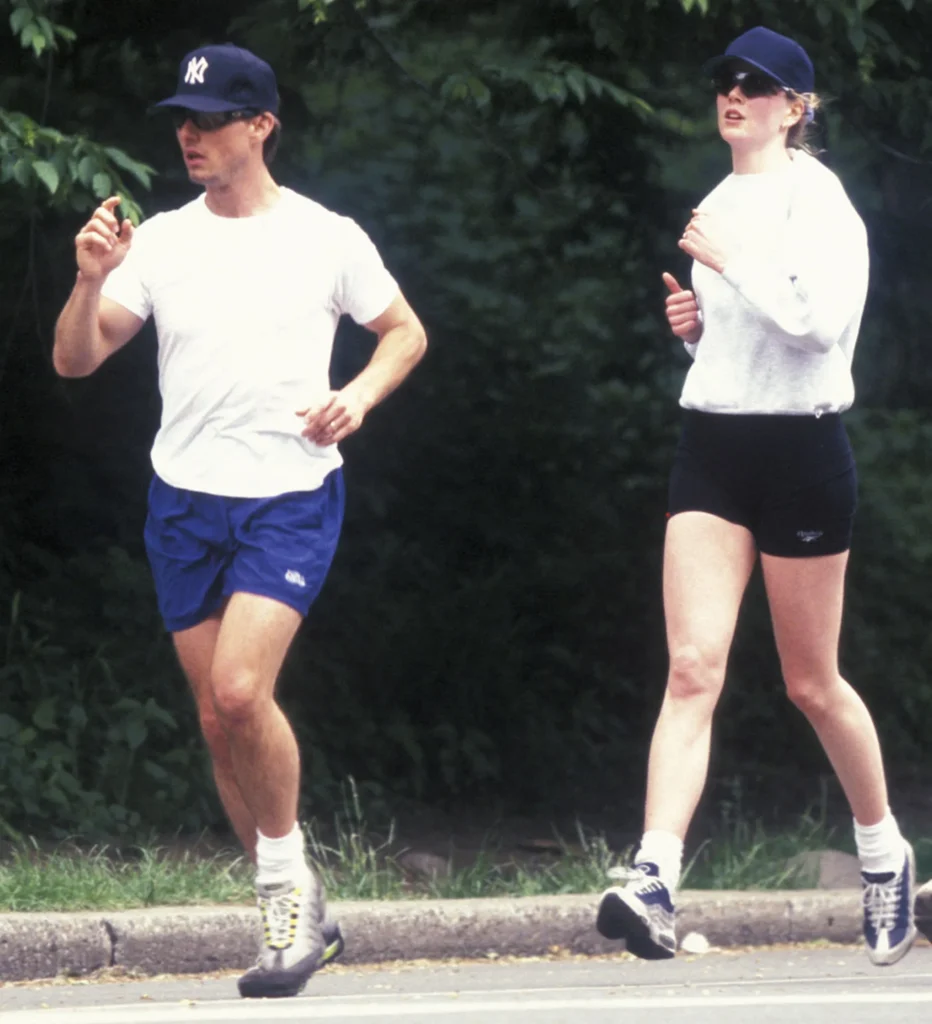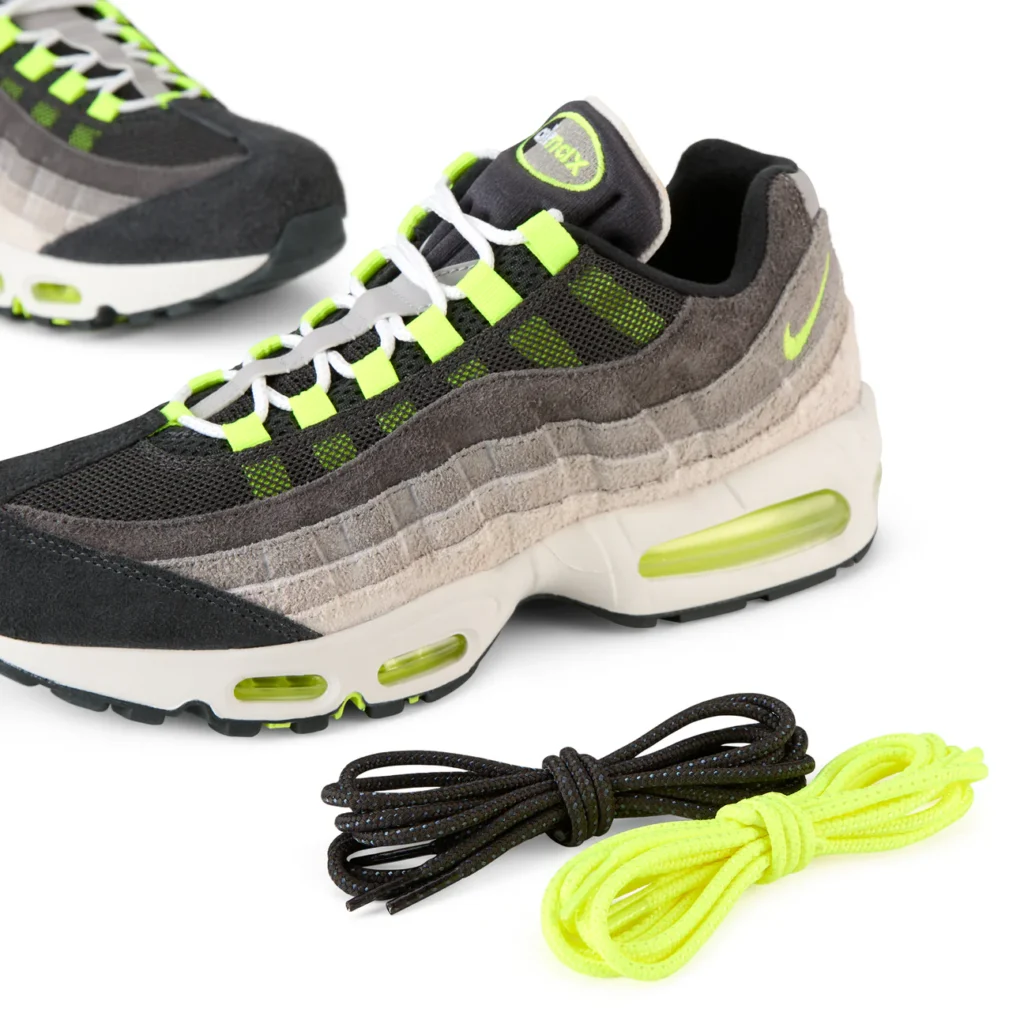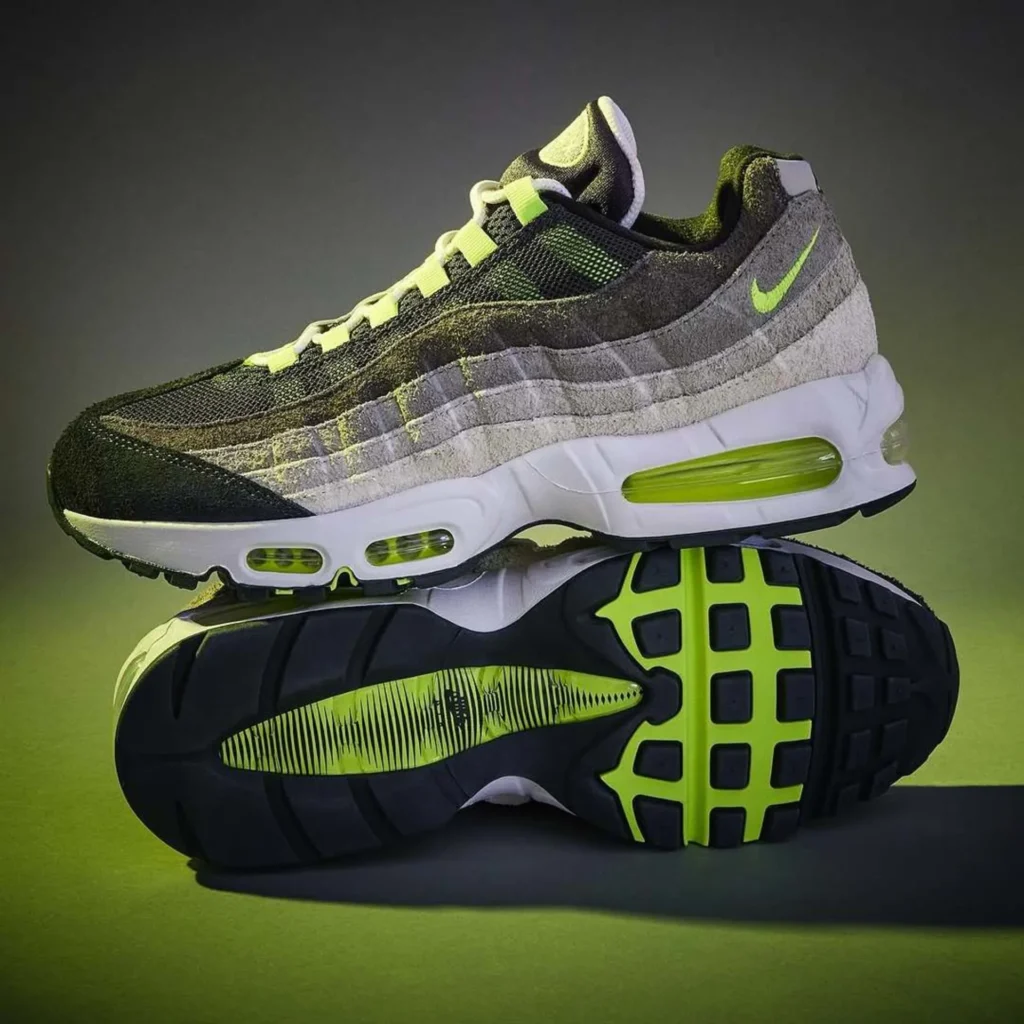With the Air Max 95, Nike Is Messing Up Another Retro Re-Release
Nike has brought back its iconic 1995 running model, but the limited releases betray what originally made the shoes so special.

Though Swoosh once dominated the footwear scene, that isn’t true anymore. Nike’s sales and share price have steadily declined over the past few years, with competitors like Hoka and On dominating the comfort footwear space, and their oversaturation of retro models during COVID — like the Jordan 1 and Panda Dunk — simultaneously made those models feel less special, and made Nike seem old.
No longer was Nike the brand of cutting-edge tech and athletic excellence; it was the place to buy retro sneakers in new colorways. Under their new CEO, Elliott Hill, the company is slowly changing direction — with a new collaborative line with Kim Kardashian, more focus on new models, and greater outreach to women consumers — but, burned by the oversaturation of 2020, Nike has forgotten how to handle their retro releases.
Earlier this year, Jordan released a series of classic colorways of the Jordan 1 to celebrate its 40th anniversary — but they screwed it up. The limited “Bred” retro came out one week apart from the “Black Toe” retro, which also coincided with the release of Union LA’s latest take on the silhouette, which divided customer funds and attention. Even a dedicated Jordan 1 fan wouldn’t buy three pairs in a fortnight, and the back-to-back releases made each seem less special. If this wasn’t bad enough, Jordan also re-released the coveted “Black Metallic” Jordan 5 — and despite a way lower marketing spend on that shoe, it was the one that most customers went for.

Another iconic Nike silhouette, the Air Max 95, is also marking an anniversary this year — 30 years since the original release. And, like the Jordan 1, Nike has messed up this release, but for different reasons.
For the unfamiliar, the Air Max 95 is one of Nike’s most iconic shoes. When designing the shoe, Sergio Lozano took inspiration from the human body — upper panels like muscle fibers, the midsole like the spine, and lace loops like ribs — and they released it in a black sole, grey gradient, and green colorway.
It was a premium sneaker, but, because of the rugged construction and dark colorway, it would still look great with heavy use, unlike the white sneakers that were popular at the time. This is why everyone from gangsters and rappers to celebrities and models bought the shoe in the 90s; and their widespread availability and cultural saturation was what made them so special.

And it’s why this new re-release is so odd. For one, though the shoe has the “big bubble” of the original pair, Nike has slightly changed the shape and paneling, with a more bulbous look and fatter toe, which makes it uglier than the last release of the shoe in 2020. More importantly, this “Neon” is a markedly limited release, with a rumored circulation of only 10,000 pairs; a wasted opportunity for a shoe that ought to be widely available on shelves.

Just this week, Nike announced another version of the shoe, with a reverse Neon colorway based on an original sketch from Sergio Lozano; but this was sold in limited online releases, and then in person at the SoHo MoMa Design Story on Friday, April 11th, with a total run of only 1,500 pairs.

This could have been a big launch to bring attention to the design history of this important pair of sneakers on the anniversary of their launch and create a new moment out of them as we head into the summer. Instead, Nike mistook scarcity for specialness, thinking this would make people care more, ironically failing to understand what made their own model take off when it first came out.

